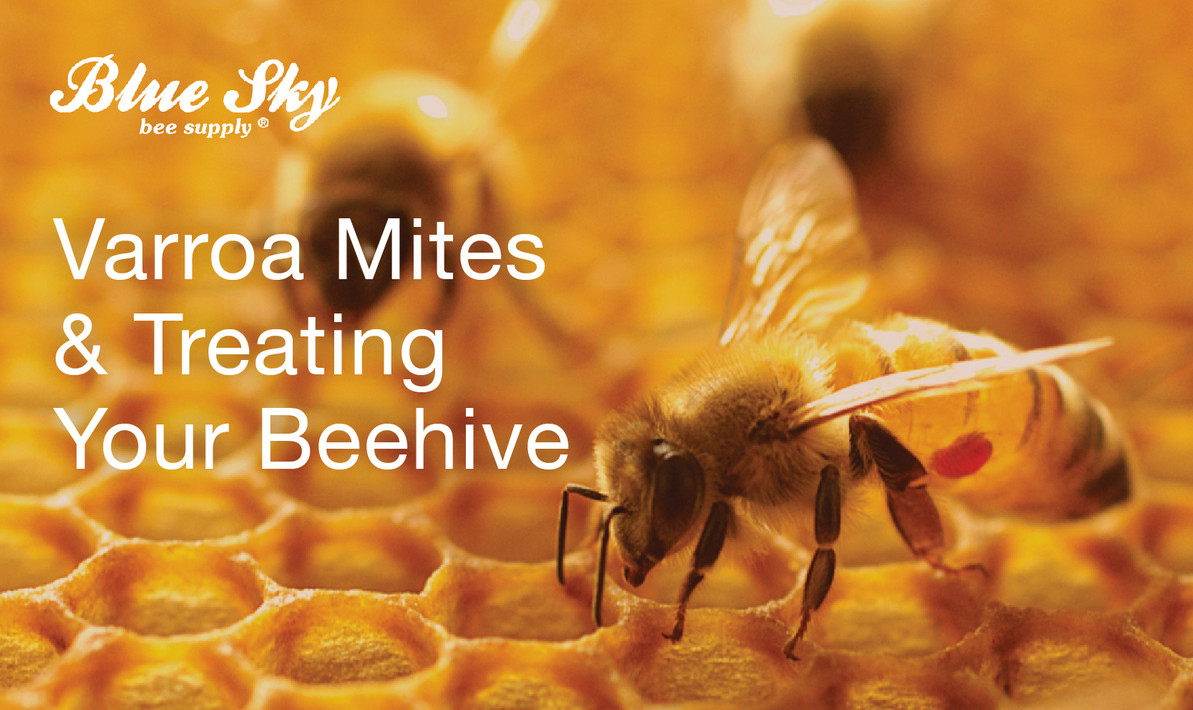Varroa Mites and Treating Your Beehive
Varroa Mites and Honeybees
Mite infestations can cause newborn honeybees to have malformed wings, legs, and bodies. Rising mite populations are believed to result from drifting bees, especially drones4. In adult bees, varroa mite infestation can affect their ability to fly, their orientation, and navigational skills3. As they kill off working bees, the colony suffers and are then unable to care for the larval bees. The progression of varroa mite infestation eventually results in the colony death.
Springtime through the summer season work as the time frame for which mites hide in capped brood cells. As a result, mites are less likely to be identified in this period. As August arrives, though barely noticeable, queens tend to lay fewer eggs each day. While the bee population gradually decreases, the mite population continues to grow. Moreover, as fewer drones are produced, the female mites then focus their dependence on the worker brood4.
If you began your beekeeping season without any mites, the rate at which the population will begin to increase is contingent upon the amount that joined your colony during that spring and summer. Beekeeping expert, Rusty Burlew, made the example that “…an average-sized colony that may have had 6 mites per 100 bees at the end of June, may find itself hosting 35 mites per 100 bees by September 1. Assuming you started the season with zero mites, the rate of increase depends on the number of mites that joined your colony during the spring and summer” to help fellow keepers understand the severity of a varroa mite infestation. The number of mites per bee increases in the height of summer and dramatically increases by August. Worker bees reared during the fall season, between September and October, will see the colony through until the springtime. Again, Rusty Burlew reminds us that:
“While a spring or summer forager may live a mere four to six weeks, a so-called winter bee (or diutinus bee) may live up to nine months. Since these long-lived bees care for the colony during the cold and confined winter months, they cannot be sick at the beginning or the colony will not survive…To raise healthy bees in September and October, your colony needs to be virtually mite-free by the end of August, the very month that the mites-per-bee ratio explodes. So if you are going to treat your hives, August is the month to do it.”
Beekeepers tend to treat mites in August and repeat the method during the winter when capped brood is present. Winter treatment is critical in stronger colonies that robbed other colonies throughout fall. Robbers tend to attack weaker, dying colonies. In addition to bringing the honey, they bring with them mites to the hive as well. Remember that timing is critical. The goal is to prevent raising a diseased colony in order to let them care for themselves from fall to spring.
Treatment Using Formic ProTM
With varroa mite infestations at stake, fortunately, treatments have been created and many even proving to be highly effective. Blue Sky Bee Supply carries a product called FORMIC PROTM as a part of integrated pest treatment.
FORMIC PRO™ causes mortality to both male and female varroa under the brood cap as well as to the varroa on the adult bees. FORMIC PROTM is to be used as part of an integrated pest management (IPM) program.
FORMIC PROTM is an extended shelf-life formulation (24-months) and doesn’t require any temperature-controlled storage.
The full dose, or “Knock Out,” treatment of Formic ProTM has an efficacy of about 83-97% “mite-kill”, which its’ customers provide testimony to. For more information on the product, see link below:
Order Now From https://blueskybeesupply.com/formic-pro-4-pads-2-treatment-pack-fpro-4/
Formic ProTM Instruction Sheet
https://blueskybeesupply.com/content/FORMIC_PRO_In...
Formic ProTM Application
References:
1). Managing Varroa mites in honeybee colonies. Small Farm Sustainability. (1970, September Retrieved August 5, 2022, from https://www.extension.iastate.edu/smallfarms/managing-varroa-mites-honey-bee-colonies
2). Texas Invasive Species Institute. details. (n.d.). Retrieved August 5, 2022, from http://www.tsusinvasives.org/home/database/varroa-destructor
3). Ways to manage honey bee pests and diseases. Apis Information Resource Center. (n.d.). Retrieved August 8, 2022, from https://beekeep.info/a-treatise-on-modern-honey-b...
4). Burlew, R. (2022, August 1). August is a critical time for Mite Management. Honey Bee Suite. Retrieved August 9, 2022, from https://www.honeybeesuite.com/august-is-a-critica...
Recent Posts
-
Unleashing the Sweet Potential: A Comprehensive Guide to Honey Marketing
Introduction: In the buzzing world of beekeeping, producing high-quality honey is just the beginnin …May 17th 2024 -
Beekeeper in the Big Apple
Home to the busiest streets in America, cars lined bumper to bumper, herds of young professionals ma …Sep 28th 2022 -
Robbing Honeybees: Detection and Prevention
As a beekeeper, it is important to be able to understand what robbing is and how to recognize …Sep 22nd 2022




